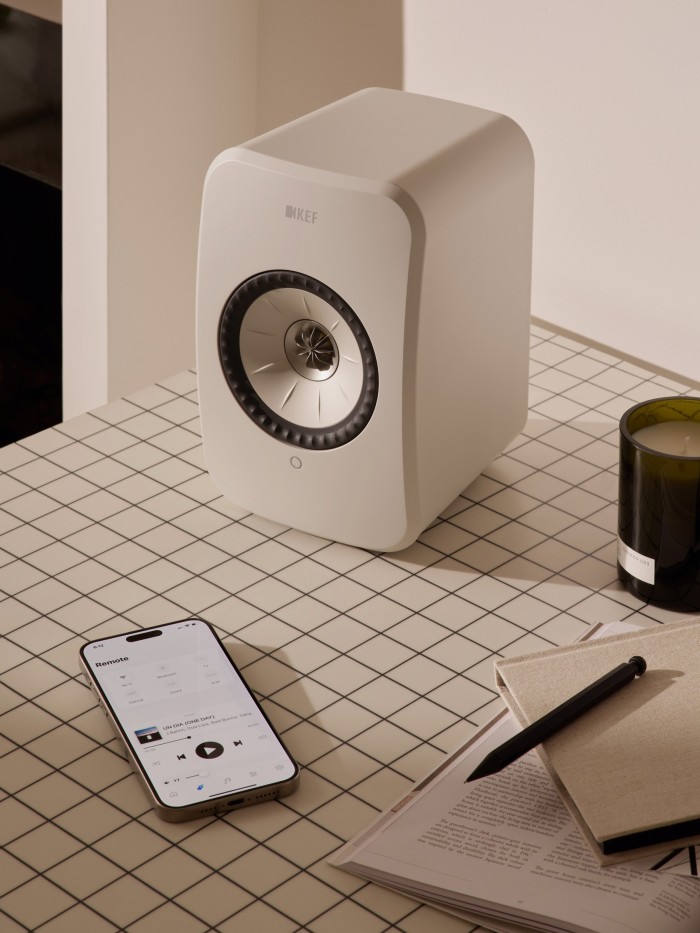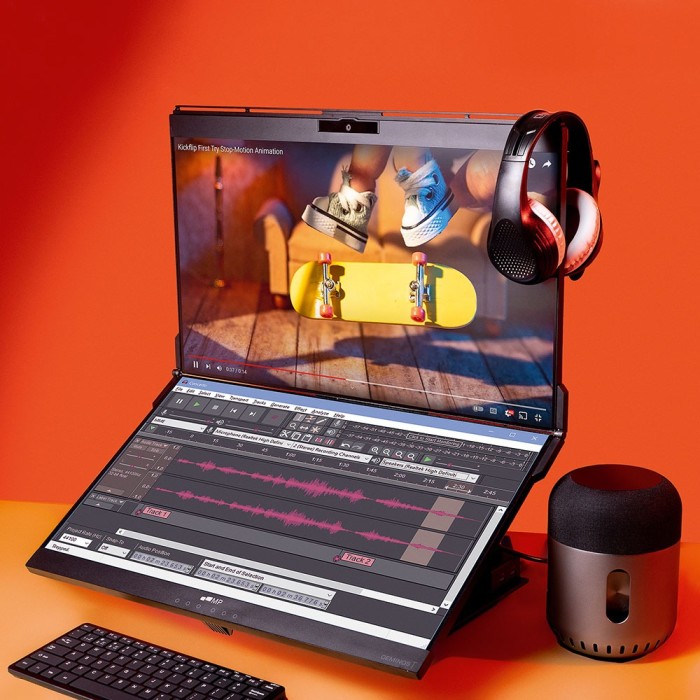Make WFH wonderful

Roula Khalaf, Editor of the FT, selects her favourite stories in this weekly newsletter.
Ace of bass
Beautiful music can brighten your working environment, but over the years some dreadful crimes against audio have been committed by external computer speakers, with their cheap plastic housing and thin cables trailing back to a 3.5mm audio port. “Theoretically better than nothing” would be the kindest appraisal. One consequence of this has been for desk workers to clamp on headphones instead, but that can feel isolating and uncomfortable. Also, desks generally don’t have sufficient room for high-end hi-fi.

So KEF, in its wisdom, set out to make a serious hi-fi speaker that could sit on a desk. That was the LSX II. This, its successor, forgoes analogue inputs in favour of streaming and digital options. Purists may wince, but frankly purists should give it a go first.
You know it’s a KEF because of the combined Uni-Q driver – a single point of sound for higher and lower frequencies. One speaker is powered from the mains, the other connected to it by a thick USB-C cable. Unless you venture into subwoofers, optical or ethernet connections, that may be all the cabling you require; it’s ready to rock with AirPlay, Chromecast, Tidal Connect, Bluetooth and other wireless options, but those who prefer to keep it old-school can connect to a computer via USB.
They sound special. Yes, a pair of KEF’s P1 stands, which angle them upwards at 10 degrees, will help with clarity of higher frequencies, but it’s the depth of the bass that is mildly pen-dropping. KEF’s Prathmesh Thakkar explained to me that at the lower volumes people typically use at their desks, KEF’s “music integrity engine” can dynamically allocate more headroom to the lower end. The result: quiet music (the kind that helps me think) in full colour.
KEF recognises that desk-mounting isn’t ideal, and that the sound can be affected by how far back on the desk the speakers sit, but its Connect app helps you optimise for your specific set-up. Overall, they provided a soothing balm on a couple of stressful, deadline‑strewn days. KEF LSX II LT speakers, £899
Mac to the future

Many people, including myself, have had a dual-computer mindset for 20 years or more. Take a light laptop when you travel, keep a powerful desktop machine in the home office, and ping files between the two as necessary. The new MacBook Air casts a withering glance at this approach: 13 times faster than my old Intel MacBook Air and extraordinary graphics performance for its size and weight. Still only two USB-C ports, but hook it up to a hub and you can have all the connectivity of a desktop, including running two monitors with the lid shut. It offers the best of both worlds: a super-capable, silent desktop machine that you can pop in a backpack. The world has moved on. 15in MacBook Air, from £1,299
Seat of power

If any community knows about chairs that offer decent support for long periods of time, it’s gamers. But while Razer’s latest chair is pitched at that market, it looks no weirder than a Herman Miller Aeron, and in some respects it’s more comfortable, whether you’re replying to 100 emails or spending an eight-hour session in Valorant. Armrests are movable in four directions and feel very solid; height and depth of lumbar support is fully adjustable, and in those moments when everything feels too much, you can rock the whole chair back 152 degrees (“I affectionately call it the flump lever,” says Razer’s Jonathan Sanders), which almost takes you into barber-shop territory. Razer Iskur V2, £599.99
Twice as nice

Double-screen set-ups are usually side-by-side affairs, but not every desk has enough space. Here, two 24in monitors are stacked and hinged, giving a substantial working area with a pretty small footprint. When fully extended they sit atop each other, but the lower screen can be angled so it tilts towards you, laptop-style. Additionally, the bottom monitor can serve as a touchscreen; I tested it doing some audio work, and it was accurate and responsive – perfect for controlling faders. The Geminos T is not plug-and-play but it was up and running in 15 minutes. It also serves as a useful hub, with USB, Ethernet and SD ports. Mobile Pixels Geminos T, £619.99, laptopsdirect.co.uk
Walk to work

Reaching a target of 10,000 steps a day can be a challenge when you’re bound tightly to your desk – unless, of course, your desk has a walking pad (formerly a treadmill – the industry appears to have rebranded it). This gym-level unit is sturdy (it can cope with 159kg) with its speed controlled by a desk-mounted console that also keeps a step count. You’ll need to pump up the height of your standing desk by an extra 12cm to allow for the step up, but thereafter it does its job quietly and reliably. The ideal working-and-walking speed is slower than if you were exercising, but it’s surprising how quickly those steps rack up during an interminable Zoom meeting. LifeSpan TR1200-SC110 GlowUp walking pad, £1,249
Comments